The Sony a6100, a6400 and a6600 are Sony’s newest APS-C cameras, effectively replacing the a6000, a6300 and a6500.
However, Sony typically likes to keep on selling their older models to provide a camera that suits everyones pocket, so I’d expect to see some price reductions on the older models.
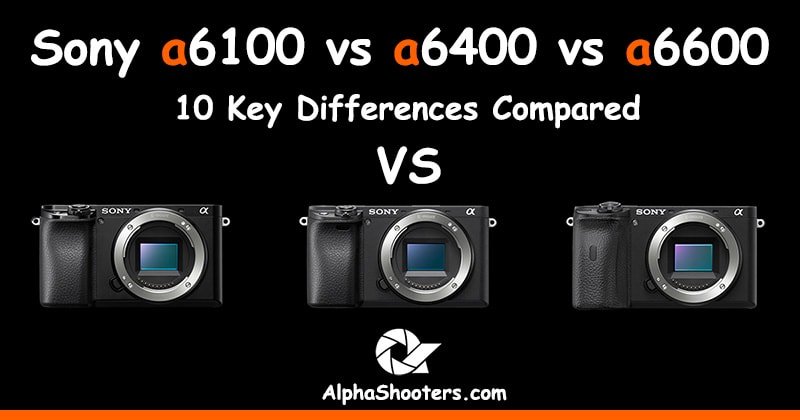
If you are new to Sony or don’t follow their APS-C line-up very closely, then the naming of the models along with the differences between them can be very confusing.
In this article we will be looking at the most recent cameras, all of which have been announced in 2019.
The a6100 is the entry model, the a6400 the mid-range model and the a6600 is their current flagship APS-C camera.
Hopefully by the time you have finished reading this article you’ll have a much better idea as to which camera you would like to buy, if any at all.
Contents
- Image Quality
- EVF and LCD Screen
- In-body Stabilization (IBIS)
- Autofocus
- Video Functions
- Audio
- Battery
- Shutter, Continuous Shooting and Buffer
- Body Design
- Price
- Specification Comparison
- Which One to Buy?
1. Image Quality
All three cameras feature a Sony APS-C Exmor CMOS sensor with approximately 24 megapixels, the BIONZ X image processor and a front-end LSI along with Sony’s new color science.

Sony a6400 + Sony FE 70-200mm F4 @ 200mm | 1/200 | f/4 | ISO 320 | Cropped | Full Resolution SOOC Download: JPEG
In normally shooing conditions it’s very unlikely that you are going to spot any differences in image quality between these three cameras.
However, if you shoot in low light conditions then you’ll find that the a6100’s extended ISO range stops at 51200 ISO, whereas the a6400 and a6600 go up to 102,400 ISO.
They still all share the same normal ISO range of 100 to 32,000.
2. Electronic Viewfinder (EVF) and LCD Screen
All three cameras feature a built-in electronic viewfinder (EVF) with a 0.39-inch OLED panel with 0.70x magnification.
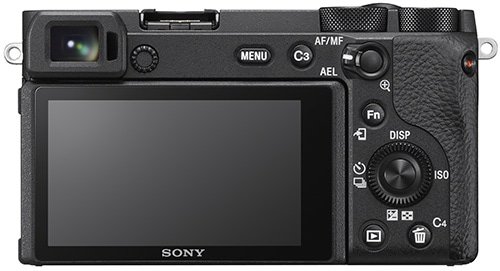
Both the Sony a6400 and a6600 have an EVF resolution of 2,359,296 dots, whereas the a6100 only gets 1,440,000 dots.
When shooting in NTSC mode with both the a6400 and a6600 you can choose a frame rate between 60fps or 120fps, in PAL mode you can choose between 50fps or 100fps. The a6100 does not have this higher frame rate option and you are limited to 60fps (NTSC) or 50fps (PAL).
All three cameras feature the same 2.4 million dot touch LCD screen that can be rotated up 180° for selfies and video logging.
3. In-body Stabilization (IBIS)
The Sony a6600 is the only camera of the three that includes In-body Stabilization (IBIS).
The 5-axis (X, Y, Roll, Pitch and Yaw) image stabilization system compensates for five types of camera shake during handheld shooting of still images and movies.
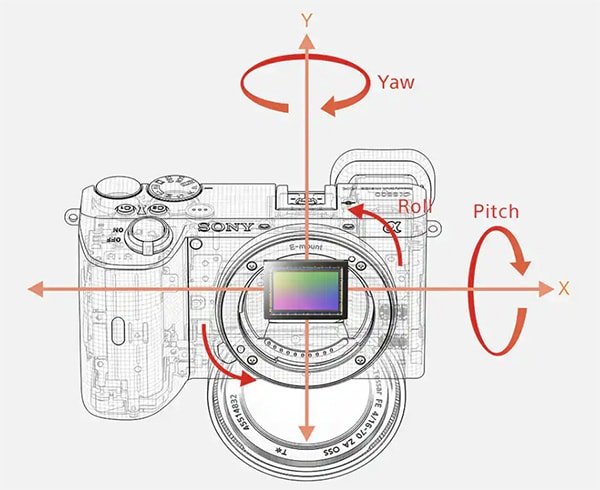
When you mount a lens that features OSS (Optical SteadyShot) to an IBIS camera body like the a6600, then the camera body only handles the X, Y, Roll and disables its own Pitch and Yaw axis.
To test if it’s beneficial to use a camera with IBIS together with a lens with OSS I mounted my Sony FE 100-400 OSS to both my a6300 without IBIS and my a6500 with IBIS to see if it made any difference. I failed to notice any significant improvement in stabilization with the a6500 even at 400mm.
So IBIS only really becomes useful if you are shooting with lenses that do not include OSS built in. In this scenario it will help to stabilize your images, especially when using a longer focal length.
4. Autofocus
Sony claims that all three cameras require just 0.02 seconds to acquire focus, so we are unlikely see any differences between the cameras here.
All three cameras also support Sony’s Real-time Tracking and Eye AF for both humans and animals.
There is one difference however, the a6600 is the only camera that supports Eye AF when shooting videos; this technology was recently introduced for the first time in the new Sony a7R IV.
Don’t worry too much though, since both the a6100 and a6400 still have the excellent tracking and face detection in video mode.
5. Video
Sony has come a long way with their video offerings since the a5100 was first launched in August 2014 and limited to 1080p (Full HD) at 60/30fps and 24p (50/25/24 in PAL markets).
The a6100, a6400 and a6600 can all record 4k video at a maximum of 30fps / 100mbps with full pixel readout and no pixel binning, as well as Full HD at 120fps / 100mbps.
However, only the a6400 and a6600 get HLG (HDR), S-Log2 and S-Log3 Picture Profiles, as Sony has decided to strip the Picture Profiles from the a6100. This may be a deciding factor if you shoot a lot of video.
6. Audio
All three cameras include a 3.5mm socket for connecting an external microphone such as the Rode VideoMicro or Rode Wireless Go (my personal favorites).
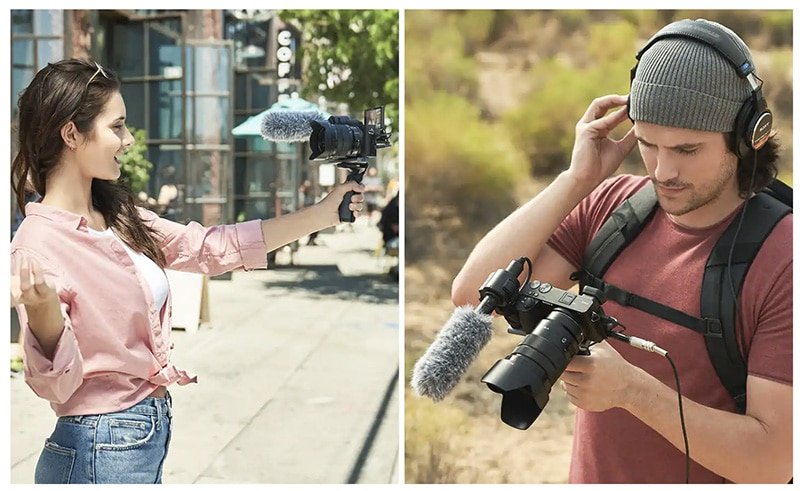
The a6600 also has a 3.5mm output for connecting headphones to enable you to monitor audio recording.
7. Battery
Out of the three cameras only the Sony a6600 takes the larger NP-FZ100 battery that can be found in the a7III, a7R III, a7R IV and a9 full-frame cameras.
The a6600 is the first APS-C camera to feature the larger capacity battery and this provides the camera with a rating of 810 shots or 150 minutes of video recording.
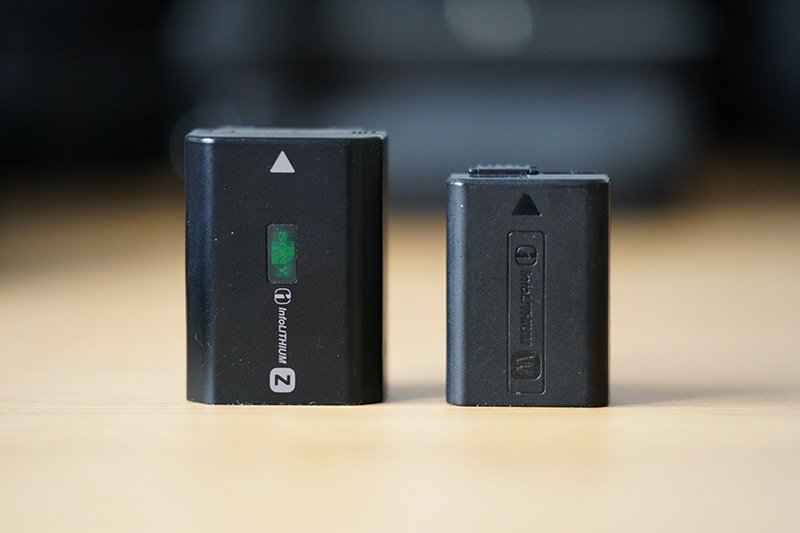
Both the a6100 and a6400 use the smaller NP-FW50 battery which has around half of the capacity of the NP-FZ100.
All three cameras can be charged via USB but none include an external battery charger in the box.
8. Shutter, Continuous Shooting and Buffer
All three cameras can shoot up to a maximum shutter speed of 1/4000s with both the mechanical and electronic shutter.
The mechanical shutter offers the fastest continuous shooting mode on all three cameras with a maximum of 11fps (Hi+), but at this setting you lose live-view (you see the last picture taken instead of a live view of your scene) and will notice more blackouts on the EVF or LCD screen. With silent shooting you are limited to 8fps.
When you select 8fps (Hi) you get live-view and very short blackouts making it easier to track subjects such as birds in flight.
The main difference between the cameras is the image buffer. The a6100 can buffer up to 77 extra fine JPGs or 33 RAW files, the a6400 and a6600 can buffer 99 extra fine JPGs or 46 RAW files.
9. Body Design
From afar you will have a very difficult time in telling these cameras apart, as the body designs are almost identical.
But if you take a look at the dimensions and weight you’ll spot that the a6600 is both larger and heavier than the other two cameras.
- a6100: 120 x 66.9 x 59.4 mm – 396g
- a6400: 120 x 66.9 x 59.7 mm – 403g
- a6600: 120 x 66.9 x 69.3 mm – 503g
The a6600 has had to grow in size to accommodate the larger NP-FZ100 battery. It also has an extra custom button on the top and the rear, along with two additional custom buttons on the mode dial.
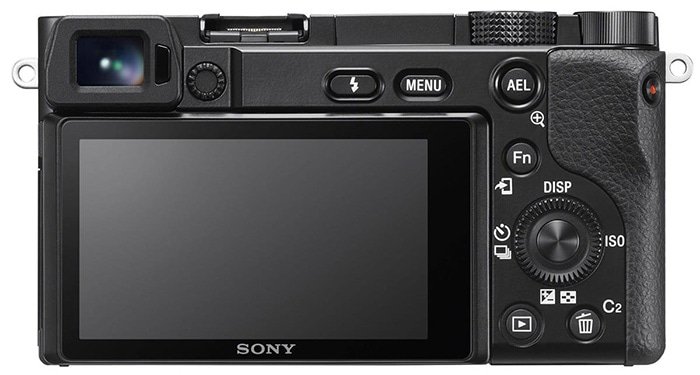
Sony a6100
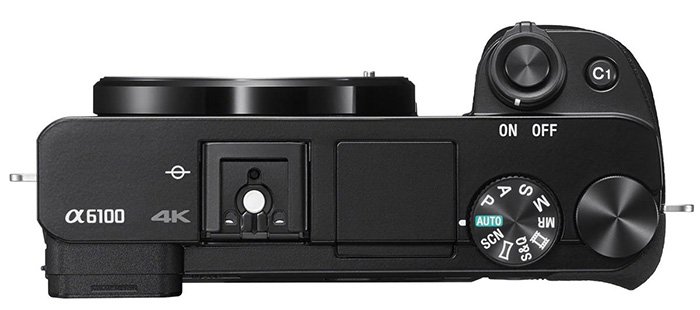
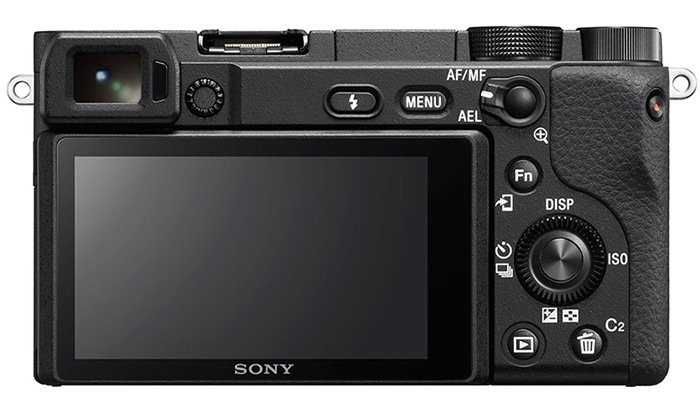
Sony a6400
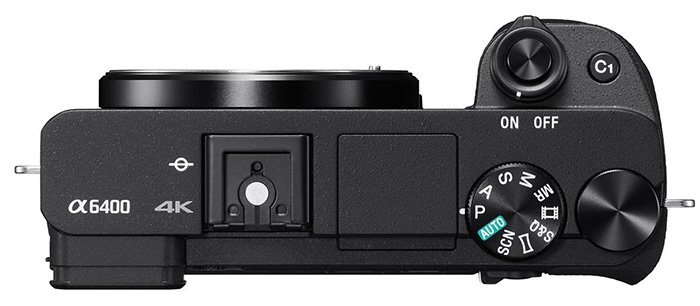
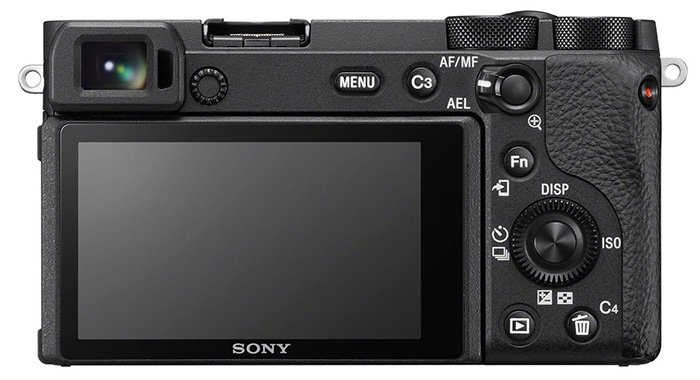
Sony a6600
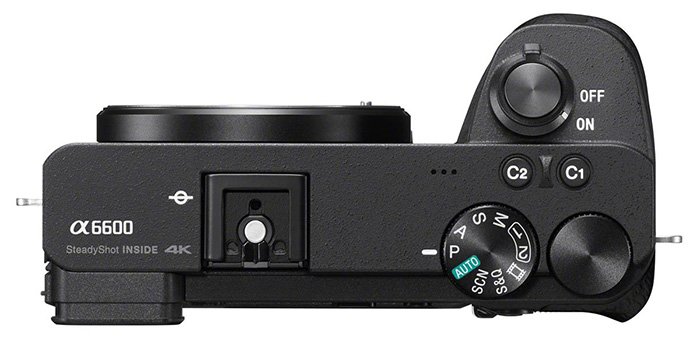
One other very important difference to mention is that the a6100 does not have the magnesium alloy body and weather sealing that can be found in the a6400 and a6600.
Also a very odd omission from the a6600 is the built-in flash, which can still be found in the a6100 and a6400.
10. Price
The body-only price of the a6100 is $748.00 US / £829.00, the a6400 costs $898.00 US / £929.00 and the a6600 $1,398 US / £1,449.00.
Specifications Comparison
| a6100 | a6400 | a6600 |
|---|---|---|
| 24.2MP APS-C Sensor | 24.2MP APS-C Sensor | 24.2MP APS-C Sensor |
| Expanded ISO 51200 | Expanded ISO 102400 | Expanded ISO 102400 |
| 0.02sec 425pt Fast Hybrid AF | 0.02sec 425pt Fast Hybrid AF | 0.02sec 425pt Fast Hybrid AF |
| 11fps continuous shooting with AF/AE tracking | 11fps continuous shooting with AF/AE tracking | 11fps continuous shooting with AF/AE tracking |
| Real-time Eye AF for humans and animals | Real-time Eye AF for humans and animals | Real-time Eye AF for humans and animals |
| Real-time Tracking | Real-time Tracking | Real-time Tracking |
| Silent shooting up to 8fps | Silent shooting up to 8fps | Silent shooting up to 8fps |
| Interval shooting for time-lapse movies | Interval shooting for time-lapse movies | Interval shooting for time-lapse movies |
| No in-body stabilization | No in-body stabilization | In-body 5-axis stabilization |
| 4k 30p internal recording | 4k 30p internal recording | 4k 30p internal recording |
| – | Picture Profile (HLG/S-Log3/S-Log2) | Picture Profile (HLG/S-Log3/S-Log2) |
| Real-time Tracking for movies | Real-time Tracking for movies | Real-time Tracking for movies |
| – | – | Real-time Eye AF for movies |
| Built in flash | Built in flash | – |
| 180° tiltable touch LCD monitor | 180° tiltable touch LCD monitor | 180° tiltable touch LCD monitor |
| OLED EVF 1,440k-dot (SVGA) | OLED EVF 2,359k-dot (XGA) | OLED EVF 2,359k-dot (XGA) |
| Microphone jack | Microphone jack | Microphone / headphone jack |
| NP-FW50 Battery | NP-FW50 Battery | NP-FZ100 Battery |
| 396g | 403g | 503g |
Which One to Buy?
All three cameras share many things in common including image quality, autofocus performance and continuous shooting. If I took a photo from each camera I’m very confident that each photo would look so similar that you wouldn’t be able to identify which camera took which photo.
The a6100 is the most cost friendly model but to achieve this you sacrifice the EVF resolution, picture profiles in video and the dust and moisture resistant body.
The a6400 which I own myself gives you a higher resolution EVF, picture profiles and a dust and moisture resistant body.
The a6600 adds 5-axis in-body stabilization, the larger battery and a headphone socket, but then it takes away the built-in flash, it also costs a whopping $500 extra. With many lenses including optical stabilization built-in you may never need the in-body stabilization and if you are serious about video then you’ll be wanting to use a gimbal anyway. The larger capacity battery and grip is very nice but I don’t think it’s worth paying $500 more for.
I’ll admit to suffering from GAS and like to purchase the latest gear, however I’m not tempted to upgrade my own a6400 for the a6600 anytime soon. I love using it for travel so prefer the smaller and lighter body and I also find the built-in flash useful for when I’m travelling light.
Please do let me know your own thoughts in the comments below.


I currently have the a6000 and I’m considering upgrading to the a6400 with the 18-135 kit. I don’t take any video at all- primarily landscapes and travel photography only. Do you think it’s worth upgrading or stick with the a6000?
Hi Kevin. You are not going to see a great deal of difference in image quality between the a6000 and a6400. If you don’t shoot video the only real benefit will be the autofocus improvements but for landscapes I guess you often shoot manual focus anyway and for travel photography the autofocus of the a6000 will be sufficient. If you like shooting timelapses then the a6400 does have the built-in interval shooting function (although there’s an app for the a6000), it also has the electronic shutter that can help to eliminate some shutter shock. Unless you really want a new camera you’d probably be better of sticking with the a6000 and investing the money in lenses or travelling instead.
I was a bit scared when the 6600 launched, I had just bought the 6400, thanks to you I now feel better, it’s just not worth the upgrade.
Glad to hear that you are feeling better Charles! 🙂 If the price drops on the a6600 then it might be worth picking up at some point, the new battery appeals to me the most especially since I use the same battery in my full-frame cameras so that would make life simpler. But no way is it worth $500 more.
Must admit I’m stuck between the A6400 and the A6600. I was hoping that the new ‘A7000’ was going to be better spec’d. More like a mini A9. £500 is a lot to pay for a IS and a bigger battery over the A6400.
Also not pleased they removed the flash. However the bigger battery is a big plus as I’m forever changing my A9 battery half way through a day and also the thought of having to take yet another charger for the A6400 W battery is annoying. .. .
So will probably go for the A6600…probably….
The other useful improvement is the handgrip. As I have large hands the larger grip will be essential-I had to buy the battery grip for the A9 as the body started cutting into my hand (after extended sessions) with the 100-400mm on it!
Hey Mark. Personally I think £500 more for the larger grip/battery and IBIS is really pushing it even for Sony. If they had made some further improvements like a new sensor and faster buffer along with UHS II card support then maybe it would be worth it. I upgraded my a6000 to the a6300, then the a6500, then the a6400, but the benefits to upgrade to the a6600 this time just aren’t there for me. The W battery isn’t great but I have a ton of them so I don’t worry about it too much. You could also use a charger like the Hahnel ProCube 2 that charges both W and Z batteries. All the best, Tim
Didn’t realise there was a charger that would do both, useful info thanks.
Might just save up for the new A9 as a ‘second’ body. If it turns out to be 36mp that will give the opportunity to crop and get more detail….
Cheers Mark
Hello Mark,
I have a7iii and now I want a backup camera for photos much more, it’s ok to go with a6100 how good is this a6100?
In some articles I read about this camera 12 bit and 16 bit colors science can you say something about this its the same like a6600?